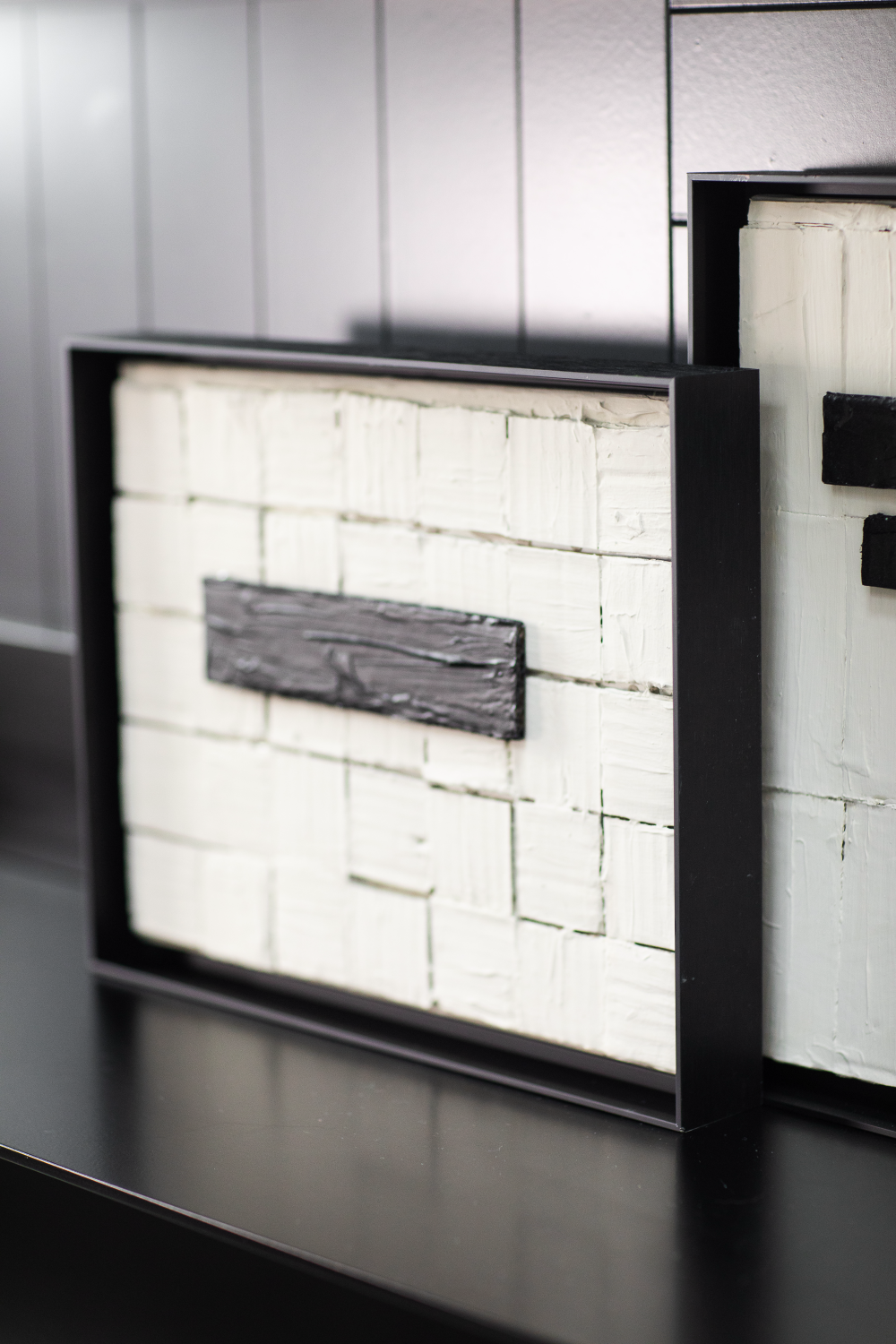The other day, I finally found the energy to break down and tie up all the cardboard boxes I had accumulated over the past two months (and yes, it was during the holiday season!). By the end of it, my back was aching. I made several trips to the recycling bin, incognito in my hat, mask, and sunglasses—mortified by the sheer amount of consumption that had taken place in my home. I hurried back and forth, probably looking a bit suspicious, all while feeling a pang of guilt.
Usually, I repurpose leftover boxes as floor or table protection for DIY projects, which helps ease my conscience. However, I recently stumbled upon an even better way to repurpose cardboard: art! Yes, art!
Carly from MyCityApartment on Instagram was inspired by Simone Polk Dahl’s artwork and decided to create something similar using supplies she had on hand. Instead of tossing her stack of Christmas boxes, she cut them up and transformed them into a stunning piece of textural art for her living room. Genius, if you ask me! If you also feel guilty every time you order something online, this super-easy project is perfect for you. Make one for yourself and for everyone you know—we have a sneaking suspicion they’ll love it!
What You’ll Need
- Leftover cardboard
- Scissors
- Paint of your choosing (baking soda optional)
- A canvas or frame
- Glue (hot melt or otherwise)
What You’ll Do
Start by prepping the canvas or frame for your artwork. You can easily reuse a canvas you no longer love, cover an old piece of art in a frame, or even work directly on a piece of poster board—it’s entirely up to you. I used a standard canvas from Michael’s and to give it a more polished look, I removed the canvas from the frame, trimmed it down, and re-stapled it to the back, exposing the frame. I then painted the wooden frame black, which gave it a totally custom appearance.
/39dc4642-f2c6-4006-bb8a-3c68985cec7b--FullSizeRender-3.jpeg)
Next, begin cutting out pieces of cardboard. The size and shape of the pieces are entirely up to you. I opted to add some variation to my rectangles by cutting some smaller and shorter than others, creating a delightful sense of imperfection throughout the design.
/7a8ec912-416b-4a9b-be0d-887b79408b64--FullSizeRender-7.jpeg)
Arrange your pieces of cardboard on your chosen surface in a way that appeals to you. I decided to replicate Carly’s design, starting with a base layer of similarly sized rectangles, which I planned to layer more pieces on top of later.
You can choose to paint each piece individually or glue them down and paint them all together. Carly used acrylic paint mixed with baking soda for added texture, so I followed her lead. I also used hot glue, but any glue you have on hand will work just fine.
/231f2347-d5dc-49df-93ad-c43bbe0eb9fd--FullSizeRender-5.jpeg)
Once the base layer is dry, feel free to add any detail pieces you’d like. I was so inspired by Carly’s design that I replicated the black lines on top of the white base—it adds just the right amount of modern detail and gives the entire piece a purposeful feel.
/3a8bf11e-e5c5-480e-b46b-cf0e47ad2788--FullSizeRender-2.jpeg)
CONCLUSION
In conclusion, creating simple DIY art using leftover cardboard is a fun and eco-friendly way to repurpose materials while adding a unique touch to your home decor. This project not only allows you to express your creativity but also helps reduce waste, making it a guilt-free craft. With just a few basic supplies like cardboard, paint, and glue, you can transform ordinary materials into stunning artwork that reflects your personal style. Whether you choose to follow a specific design or let your imagination run wild, this project is perfect for artists of all skill levels. So gather your leftover cardboard and start crafting—your walls will thank you!







